A simple but perhaps not the most efficient (??) way would be to use drawContours to create two images: one with the contour of the car and one with the contour of the obstacle.
Then and them together, and any point that is still positive will be points of intersection.
Some pseudocode (I use the Python interface so wouldn't get the C++ syntax right, but it should be simple enough for you to convert):
import numpy as np # just for matrix manipulation, C/C++ use cv::Mat
# find contours.
contours,h = findContours( img, mode=RETR_LIST, method=CHAIN_APPROX_SIMPLE )
# Suppose this has the contours of just the car and the obstacle.
# create an image filled with zeros, single-channel, same size as img.
blank = np.zeros( img.shape[0:2] )
# copy each of the contours (assuming there's just two) to its own image.
# Just fill with a '1'.
img1 = drawContours( blank.copy(), contours, 0, 1 )
img2 = drawContours( blank.copy(), contours, 1, 1 )
# now AND the two together
intersection = np.logical_and( img1, img2 )
# OR we could just add img1 to img2 and pick all points that sum to 2 (1+1=2):
intersection2 = (img1+img2)==2
If I look at intersection I will get an image that is 1 where the contours intersect and 0 everywhere else.
Alternatively you could fill in the entire contour (not just the contour but fill in the inside too) with drawContours( blank.copy(), contours, 0, 1, thickness=-1 ) and then the intersection image will contain the area of intersection between the contours.
